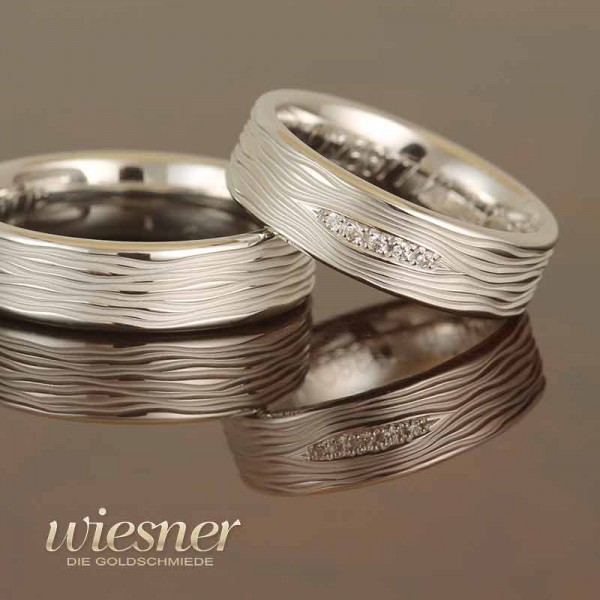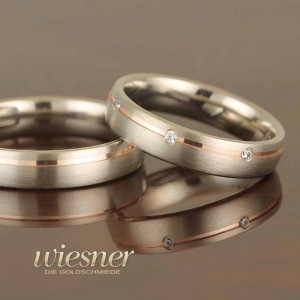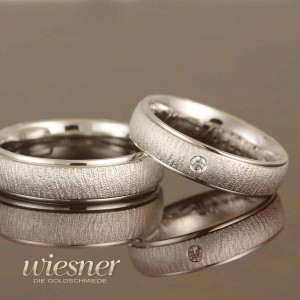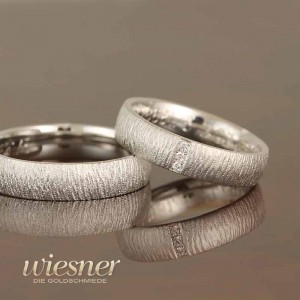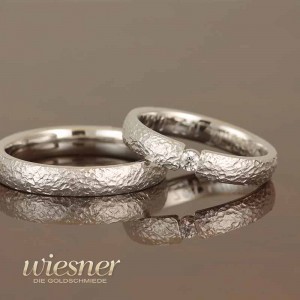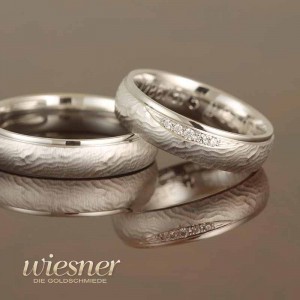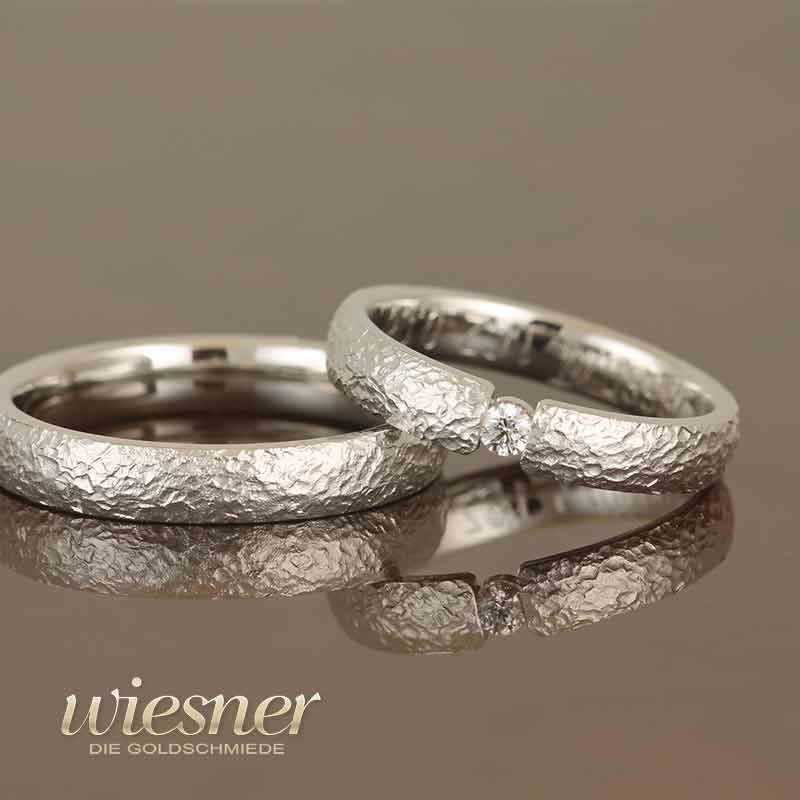The origin and significance of white gold in the jewelry industry
White gold, an almost colorless gold alloy, was first developed in Pforzheim in 1912/13. It was created as an inexpensive and punchable substitute for platinum and quickly found its way into the world of jewelry. White gold became known as "or gris" (grey gold) in the French-speaking world and became the material of choice for jewelry designed to show off colorless diamonds. Before the development of white gold, silver, platinum and the slightly darker and lighter palladium were the materials of choice, but each had its own disadvantages.
The history and development of white gold
White gold arose from the need for a material for jewelry that was easy to work with and resistant to tarnishing. Before 1912, there were no pieces of jewelry made from white gold, as it simply did not exist. Silver, although inexpensive and easy to work with, tends to tarnish and lose its shine as a result. Platinum, on the other hand, was more expensive and more difficult to work with. Palladium, a platinum by-product metal, was a good alternative, but also darker and lighter than platinum.
The jewelry industry was looking for a material that combined the advantages of these metals without their disadvantages. Thus white gold was born. This new alloy made it possible to display colorless diamonds in all their glory without the material itself tarnishing or discoloring.
What is white gold?
White gold is a gold alloy that is given a pale white color by the addition of decolorizing metals. These metals, which are added to the gold to give it its characteristic color, are mainly palladium, nickel or, if the gold content is low, silver. The decoloration of the naturally yellow gold occurs continuously and requires a certain amount of these decolorizing additives.
Palladium is a platinum by-product metal that is often used to give white gold its color. Nickel used to be widely used but is less common nowadays due to its allergenic properties and legal regulations. Silver is used at lower gold contents to achieve the desired color. The remaining part of the alloy, which is still missing up to the calculated total volume, is often completed from a mixture of copper and silver.
The properties of white gold
White gold has several advantageous properties that make it a popular choice for jewelry:
- Tarnish resistance: unlike silver, white gold does not tarnish and retains its shine over long periods of time.
- Hardness and durability: White gold is harder than pure gold and is therefore ideal for making jewelry that is worn every day.
- Elegant appearance: The almost colorless appearance of white gold allows diamonds and other precious stones to stand out particularly well.
- Versatility: White gold is easy to work with and can be incorporated into a variety of jewelry designs.
The use of white gold in the jewelry industry
White gold is used in a variety of jewelry, including rings, necklaces, bracelets and earrings. It is particularly popular for engagement and wedding rings, as its neutral color enhances the brilliance of diamonds while being durable and easy to care for.
In the manufacture of white gold jewelry, rhodium plating is often applied to give the jewelry an additional shine and increase the surface hardness. However, this rhodium plating needs to be renewed occasionally as it wears off over time.
Here is an example of white gold wedding rings from Gerstner
Advantages and challenges of white gold
White gold offers many advantages, but there are also some challenges that need to be considered. The rhodium plating that is often applied to white gold to give it extra shine can wear off over time and needs to be renewed. In addition, white gold is more expensive to produce than yellow gold, as the decolorizing additives and the manufacturing process are more costly.
Despite these challenges, white gold remains one of the most popular choices for high-end jewelry due to its unique properties and elegant appearance.
All in all...
White gold has become one of the most important materials in the jewelry industry since its introduction over a century ago. Its tarnish-resistant, elegant appearance and ability to show off diamonds particularly well make it a popular choice for jewelry lovers around the world. The addition of decolourizing metals such as palladium, nickel or silver gives the originally yellow gold its characteristic white-pale color, which sets it apart from other gold alloys.

